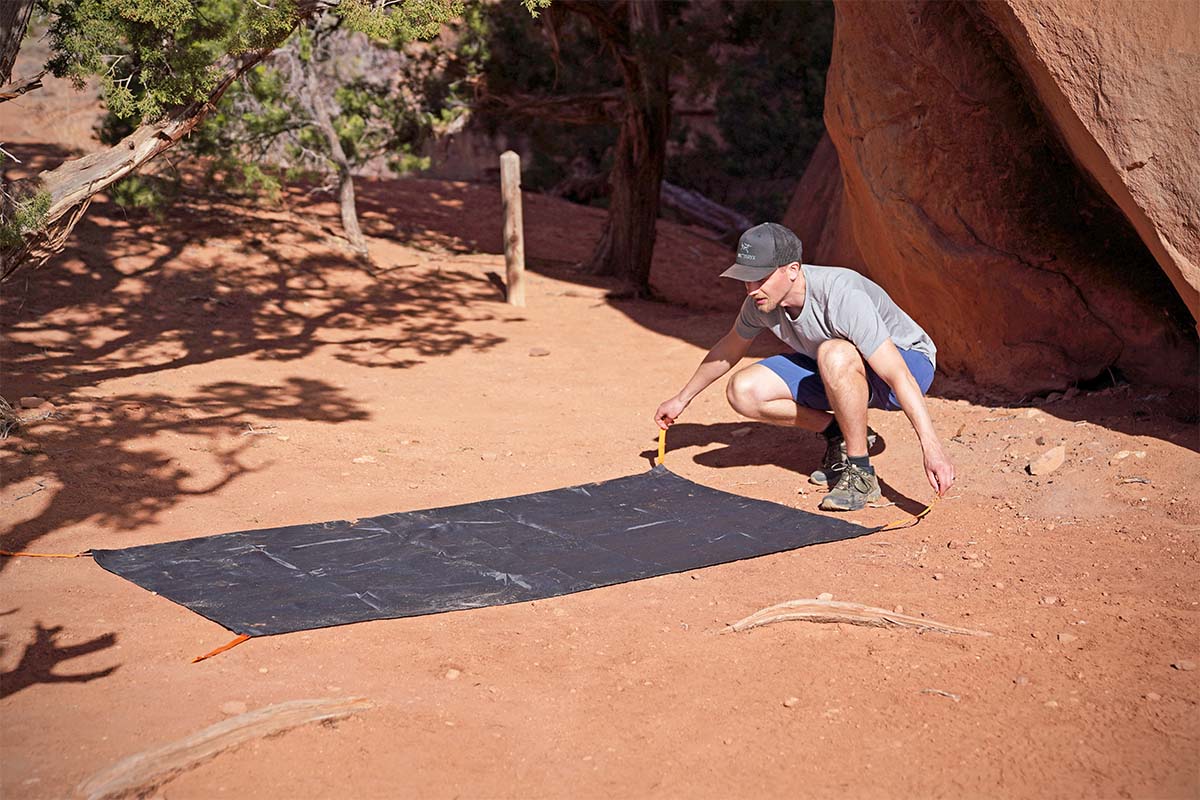
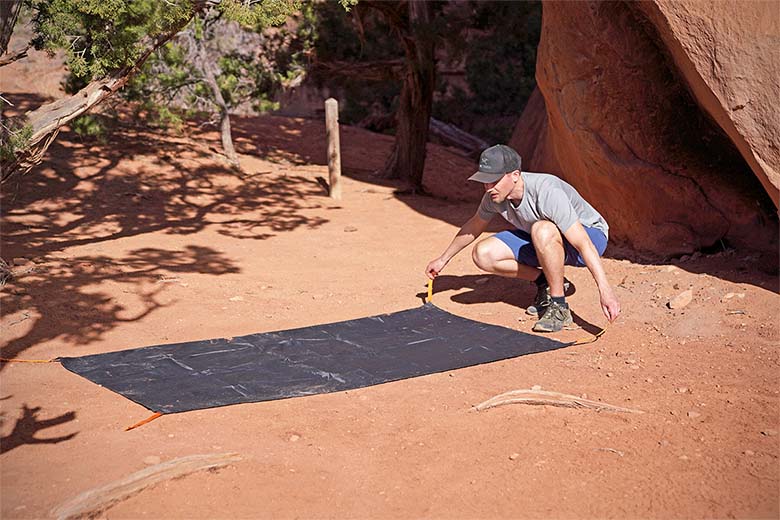
Switchback Travel


Switchback Travel
This age-old question challenges newbie backpackers and veterans alike. You've already spent a substantial amount on a tent, but should you tack on the extra purchase of a footprint? Below we break down how to decide, explain what a footprint does, look at how the toughness of your tent matters, and more. For more background information and a look at our top tent picks, check out our articles on the best backpacking tents, best budget backpacking tents, and best ultralight tents.
Editor's note: We updated this article on June 20, 2025, to expand several sections, incorporate new photos from testing, and ensure all product references and links were current at the time of publishing.
A footprint is a lightweight ground sheet that forms a barrier between your tent floor and the ground. If we, as good backpackers and stewards of the land, adhere to Leave No Trace principles, we will camp as often as possible on durable surfaces like rock, gravel, or already established campsites. Over time, these surfaces can act like sandpaper and eventually erode your tent's fabric and waterproofing, especially if you're using an ultralight tent that's made with ultra-thin materials. In the worst-case scenario, a puncture from a rock or root puts a hole in your tent floor, which can be difficult to repair. To prevent this from happening, a footprint acts like a second skin by creating an extra barrier between you and the ground. A tent alone should keep you dry (that's its job), so the real questions are whether a footprint is necessary given the extra cost and weight.
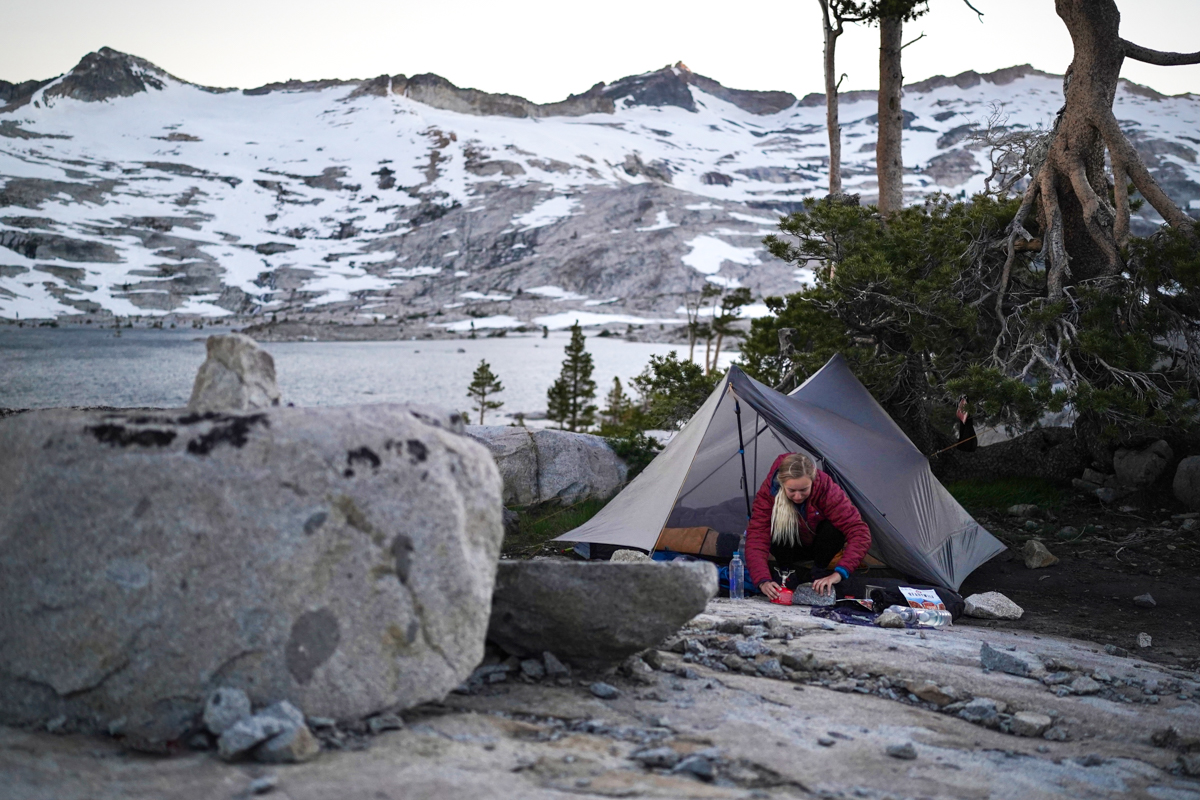
Denier (D) measures the weight of a fabric's thread, and the higher the denier rating, the thicker and tougher the fabric will be. For this particular topic, it's the denier of the tent floor that matters as it will be in contact with the ground, and this number can vary substantially. For instance, the ultralight Big Agnes Tiger Wall has a super-thin 15D floor, while the heavier Marmot Tungsten has a 68D floor. Side by side, that's a huge difference in terms of thickness and durability. A tent with a lower-denier floor means that it's more likely to incur damage and, accordingly, the more likely we are to recommend using a footprint. In general, ultralight tents need to be babied a more than heavier models.
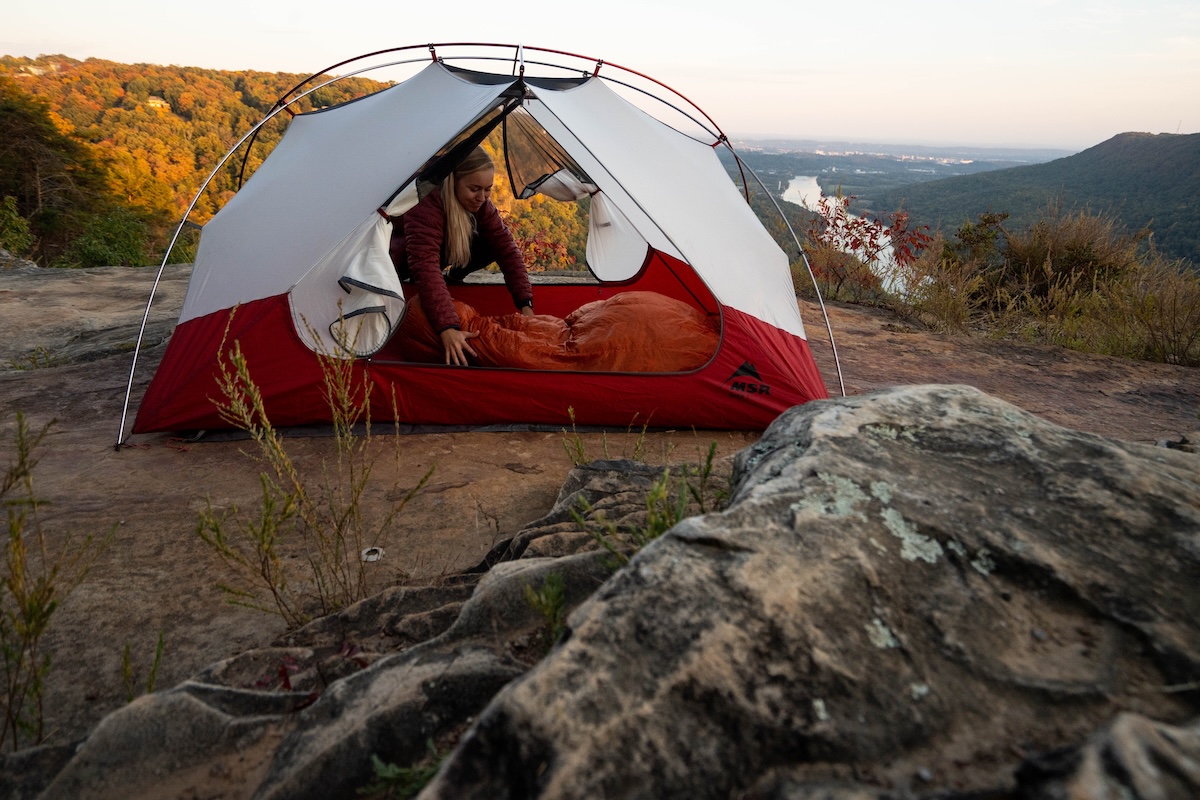
Then we must ask ourselves an important question as backpackers: Why purchase a lighter tent with a lower denier if we are just going to add more weight with a footprint? As an experienced backpacker who counts grams, I usually opt not to carry a footprint and instead choose wisely in terms of where and how I set up my tent. Many ultralight backpackers use lightweight DIY footprints as described below, and many new/weekender backpackers either use tougher (and heavier) tents or don't care about carrying the few extra ounces of a footprint.
.jpg)
The beautiful, unique places in which we backpack offer different surfaces with varying levels of impact on the bottom of your tent. In general, camping on rock is the biggest threat to your tent, and granite in particular. A granite slab in Tuolumne Meadows will create more wear and tear than, say, a forest floor blanketed with fall foliage in the Adirondacks. It takes just one sharp piece and the wrong amount of pressure or movement to create a tear or hole. The rock in Utah's Canyon Country is a bit softer (it's a lot of sandstone and shale) but still can cause issues if you aren't careful. And forest floors, although seemingly harmless, still have hidden rocks and roots that are best avoided.
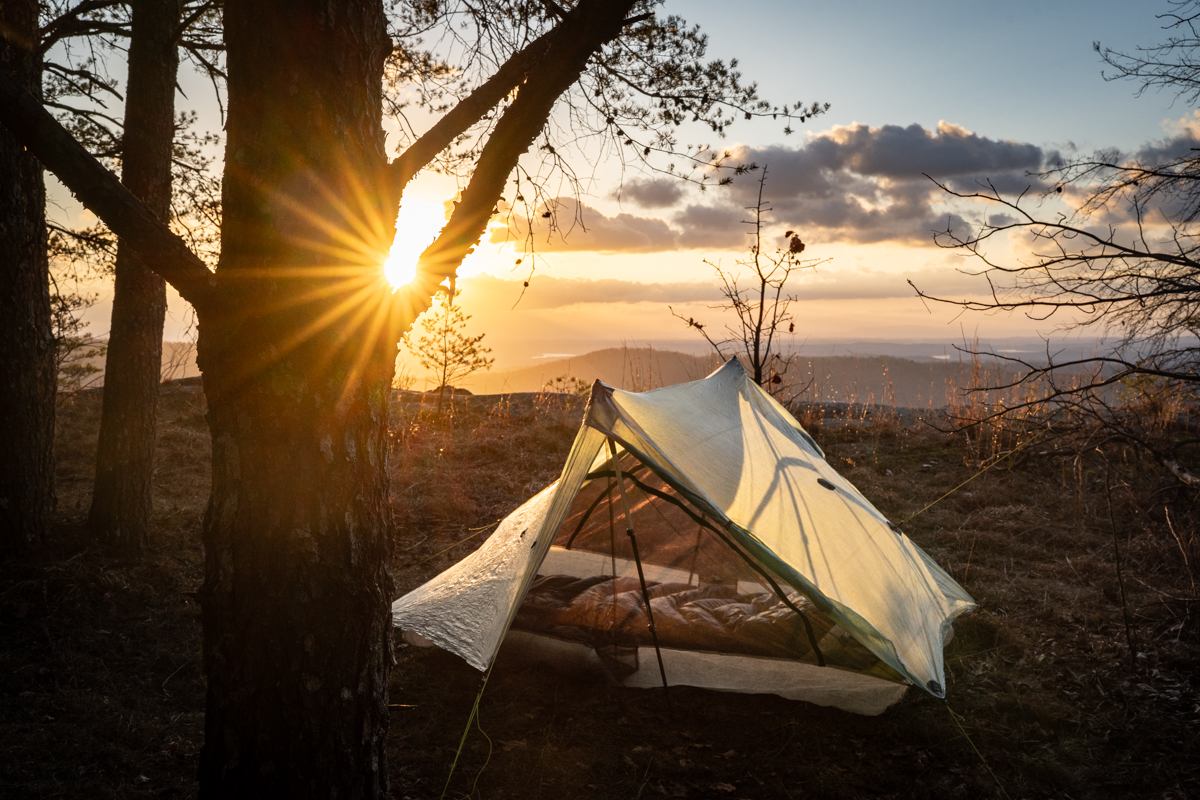
Regardless of the surface you camp on, it's always important to scope out the area and choose the flattest spot to set up a tent. First, who wants to sleep with a rock protruding into their lumbar region? Second, those big pointy rocks can create unwanted tears and holes. In addition, keep in mind that setting up a tight, sturdy tent will help prevent abrasions. By staking out the guylines and making sure there is nominal movement, you are minimizing the amount of friction created between the ground and the tent fabric.
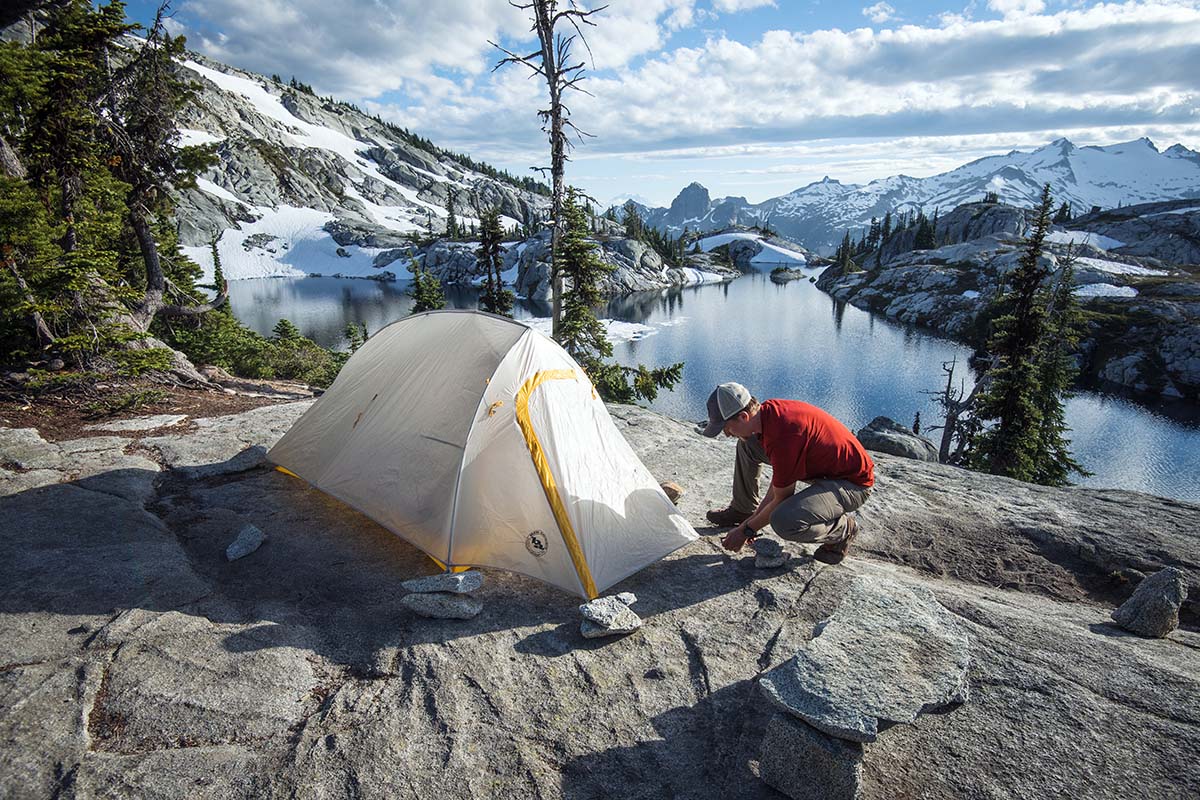
Most outdoor gear companies offer their own branded footprints that fit seamlessly with their designated tents: The footprint will fit perfectly and match the color scheme. But this comes at a cost. Matching footprints range from around $40 to $80 and are relatively heavy, depending on the material and size of your tent. For example, the footprint for Nemo's Hornet Dragonfly Osmo 2P weighs 7.8 ounces and costs a whopping $70. Given that the tent itself weighs 3 pounds 2 ounces and costs $500, a footprint is a significant addition.
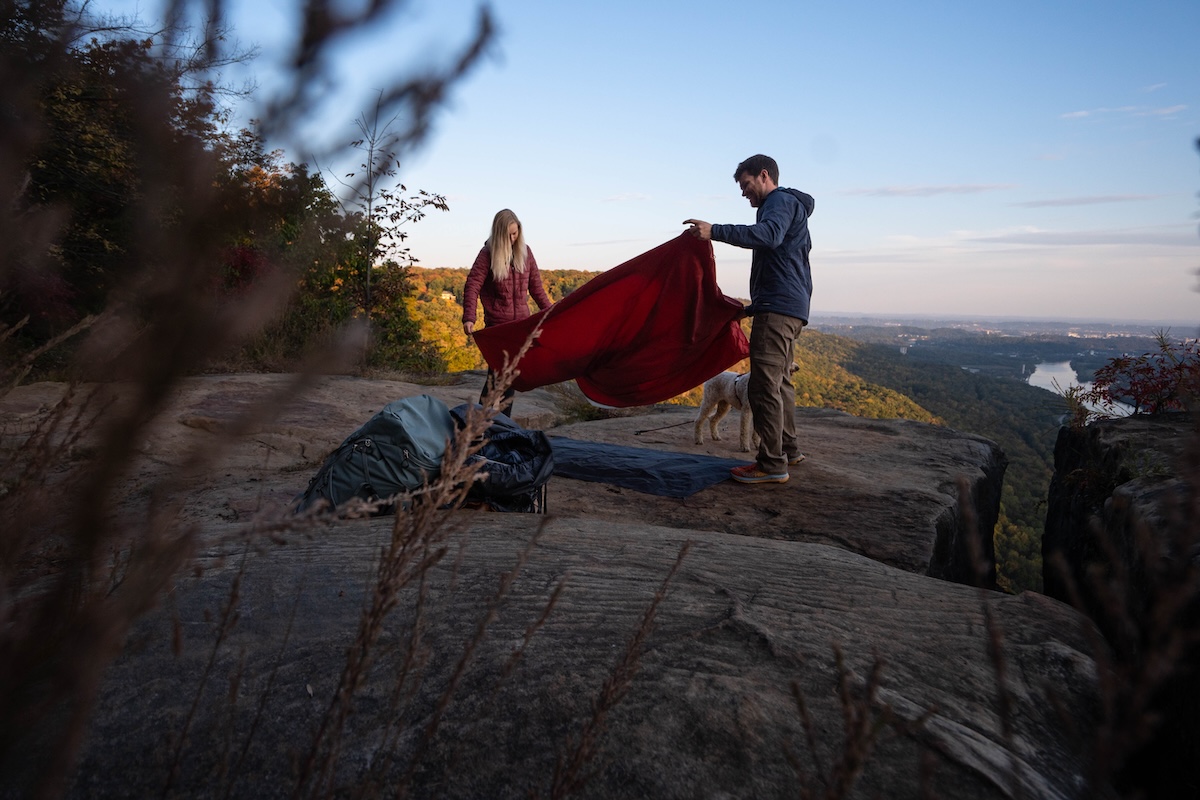
Before we get into DIY footprints that are lighter and cheaper, we want to give tent-specific footprints their due. Because the two pieces (tent and footprint) fit together perfectly with no material sticking out from the bottom of the tent, the design prevents precipitation from diverting underneath and creating a wet, cold pool where you sleep at night. In addition, these custom footprints are made with metal grommets in the corners so that you can connect the tent and the footprint with the ends of the poles, or connect the footprint to the rainfly if your tent has a fast-pitch option. Most of the time this isn't necessary, but we have camped in high winds where the footprint had a mind of its own. Finally, manufacturer-provided footprints are thicker and tougher than the DIY options, meaning that they should have longer lifespans.
After investing in a tent, adding a footprint can start to feel rather pricey—not to mention the extra weight it adds to your pack. Fear not: You can often DIY a more cost-effective and lighter system.
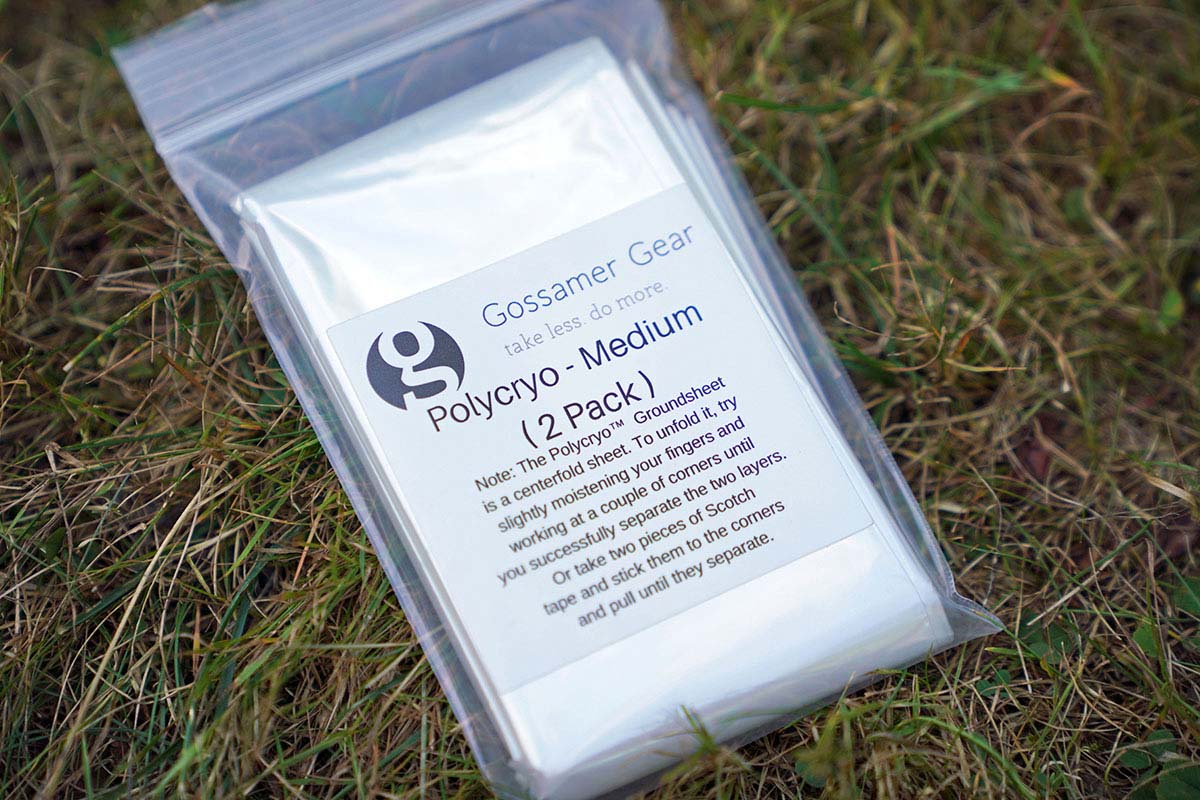
Ultralight enthusiasts and thru-hikers swear by the 0.7-millimeter-thick Polycryo (also called "Polycro"), which you can find on Amazon or at your local hardware store. There are multiple thicknesses, and some people opt for the tougher and slightly heavier 1.5-millimeter Polycryo. In addition, Gossamer Gear sells a large, 72-by-96-inch sheet of Polycryo for $11, which is an attractive option. Many ultralight backpackers use these sheets as their only ground cloth beneath a tarp, while others use them as footprints for tents. Gossamer Gear's Polycryo sheets weigh 3.7 ounces each—compared to 7.8 ounces of the Nemo footprint mentioned above—and you can lighten that up even more by trimming the sheet down to the dimensions of your tent. However, keep in mind that Polycryo can be a bit slippery on snow and won't last forever.
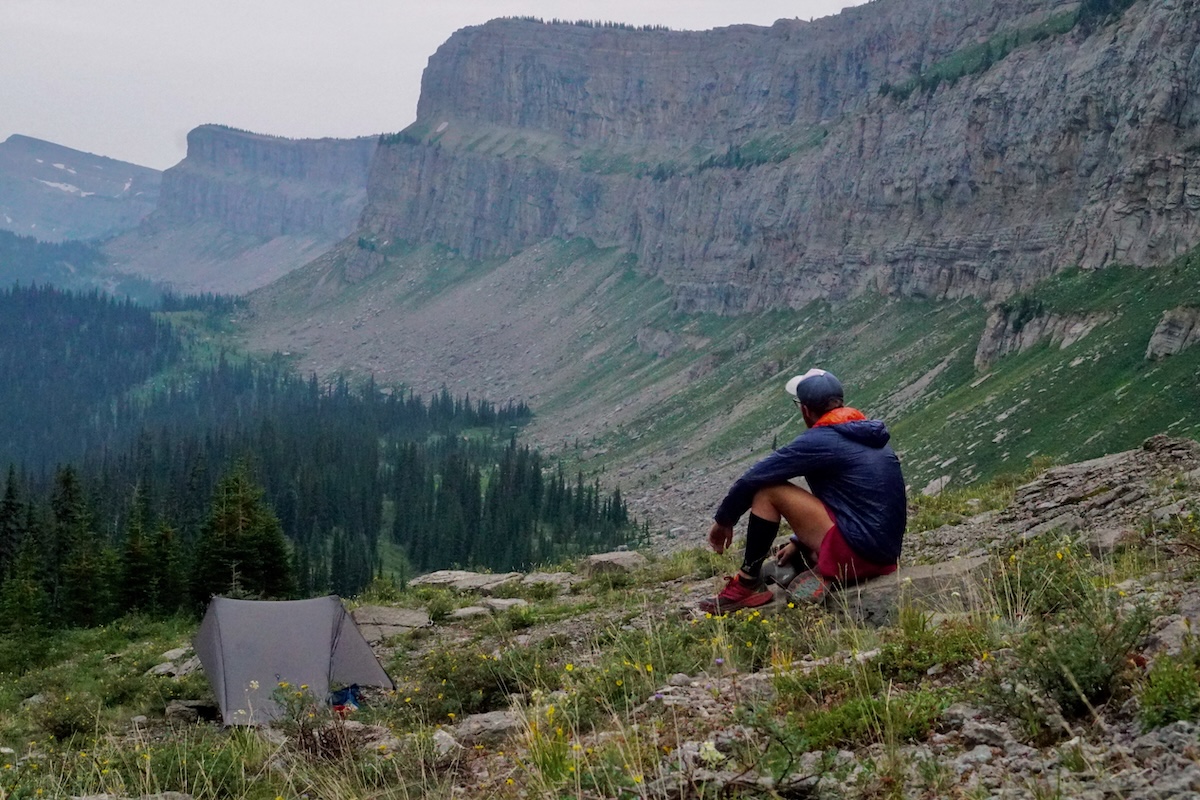
A more durable DIY option is Tyvek, which is a lightweight, breathable, and water-resistant material that we've found to last much longer than Polycryo. Tyvek has many uses but is most commonly employed for house wrapping in construction, keeping moisture out while letting water vapor escape. Tyvek is available in various quantities on Amazon and will set you back about $20 for a 3-by-7-foot section. Alternatively, you can usually pick up some discarded Tyvek sheets from construction sites (after getting permission, of course). Tyvek weighs .14 ounces per square foot, which is heavier than Polycryo but will afford you more durability. By our calculation, a Tyvek footprint cut to fit an average two-person tent will weigh between 3 and 4 ounces, which is still less than half of what most custom footprints provided by the manufacturer will weigh. And a final bonus: Tyvek can pull double duty as a makeshift hitchhiking sign during long backpacking trips, making it a popular pick for thru-hikers on trail for months at a time.
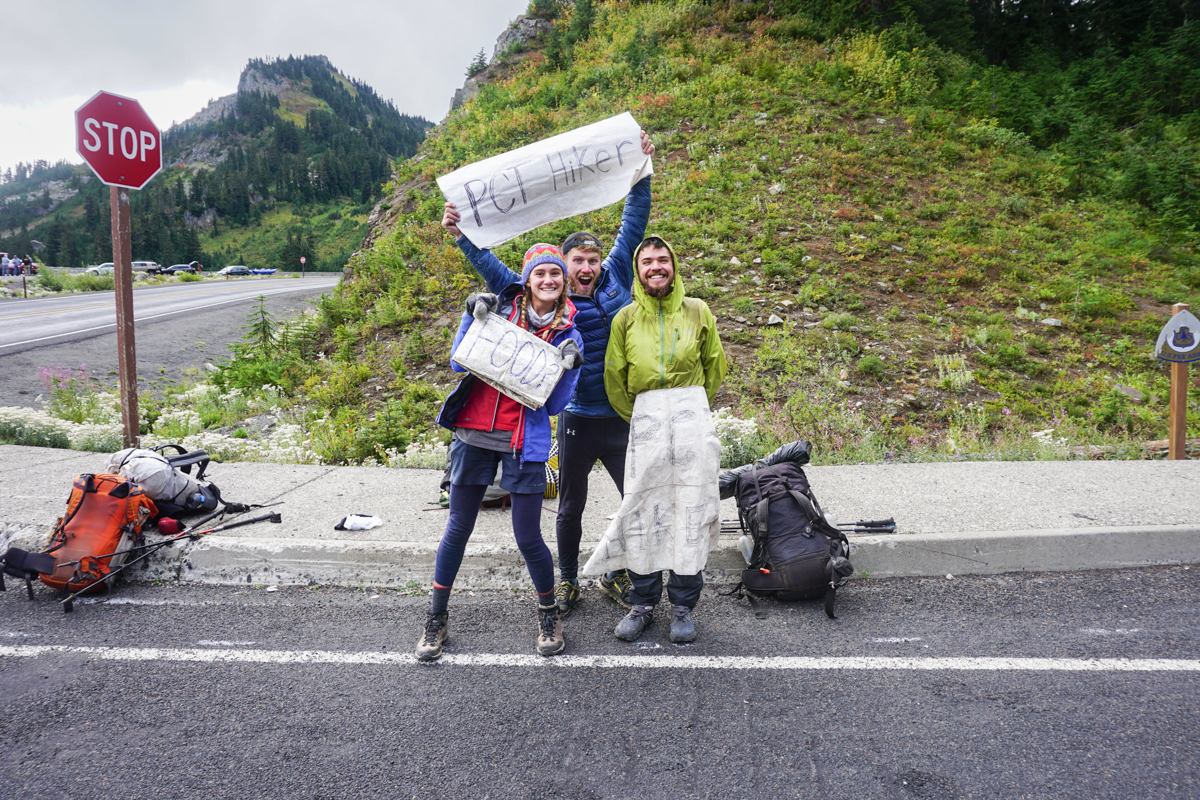
Finally, you can always buy a standard tarp, which is useful around camp. But a tarp will be heavier and bulkier than Polycryo or Tyvek, which makes them less attractive in our book. No matter which route you go, when cutting a custom footprint, be sure to cut the shape slightly smaller than the floor of your backpacking tent. If excess fabric sticks out from underneath the tent, it can collect water and let it pool underneath. At best, you will wake cranky and wet. At worst, your gear will be inundated with water, which makes your entire backpacking trip a lot more challenging.
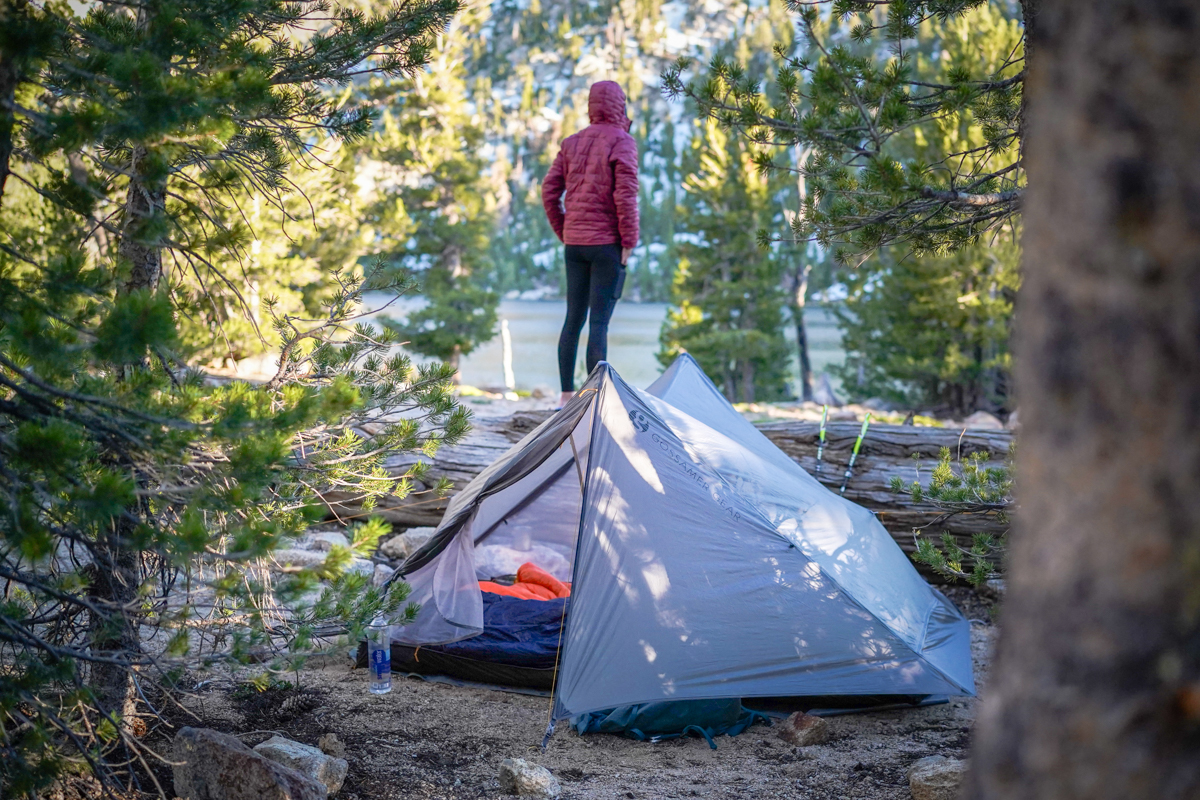
There is no one-size-fits-all answer to the footprint dilemma, but here's our best shot: The footprints offered by tentmakers are expensive and heavy, albeit more durable than the DIY options like Polycryo and Tyvek. If you value the peace of mind, don't care about carrying the extra ounces, or just like the convenience of a matching footprint, go for it. It's worth noting that a number of tents like the Marmot Tungsten series and REI’s popular Half Dome collection are now including footprints with the tent to sweeten the deal, although ironically, these happen to be the thickest tents, and therefore need footprints the least.
You also should take into account your specific tent model (the floor denier) and what type of backpacker you are. Some people are meticulous with their gear and do everything within their power to care for it, while others pay less attention and may inadvertently cause a tear. A footprint is a type of insurance, so if you don't use one, consider what would happen if you were to tear your tent. This type of thing can be tough to fix, at least in a satisfactory way in the long term. Nylon repair kits like Tenacious Tape are a decent option but not nearly as good as a tent in mint condition.
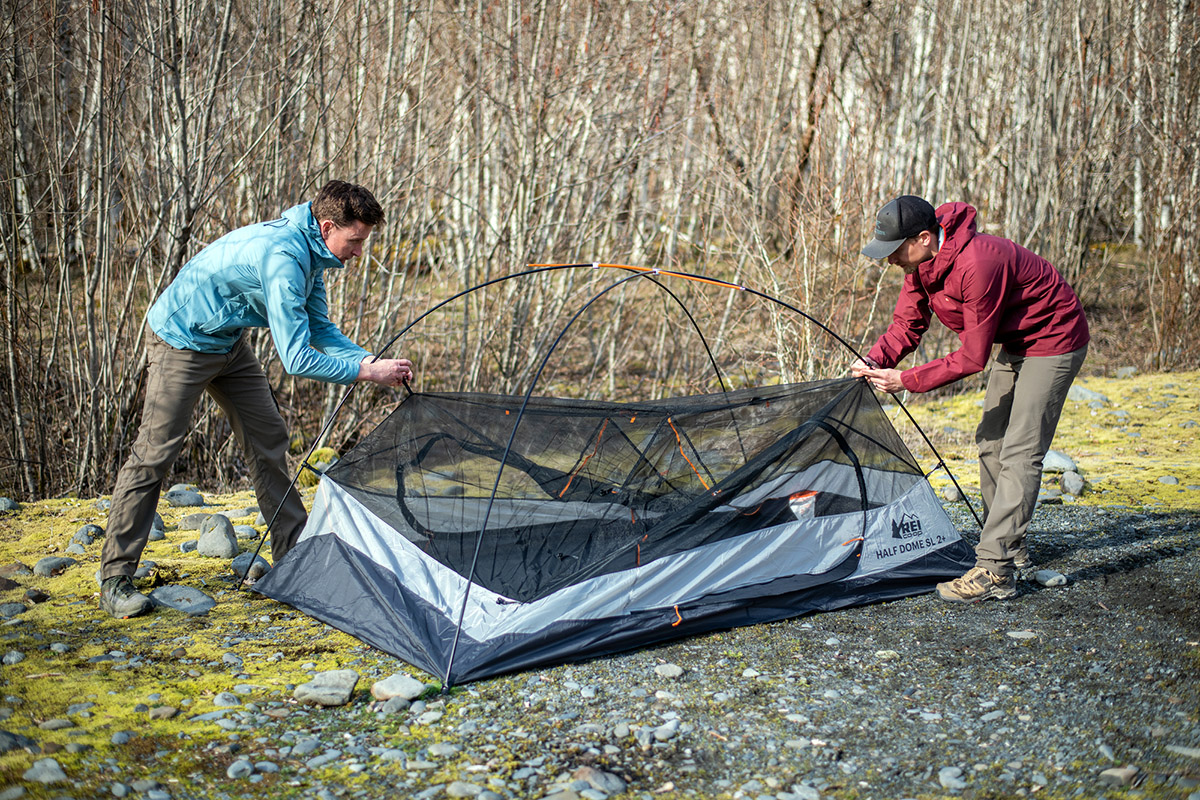
If saving weight is the name of the game, and you work with intention and care while setting up and using your gear, a footprint may not be necessary. Perhaps the middle ground is best of all: a lightweight and inexpensive Polycryo groundsheet that gives you peace of mind without hurting your back or wallet. And it's not the worst thing to have in your pack either—you may find other uses for it, like covering extra gear or just sitting on it around camp.
Back to Our Tent Footprint Guide See Our Backpacking Gear Reviews